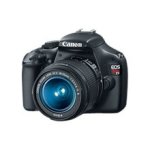DSLR Cameras
SLR cameras – the D just stands for digital and nobody makes 35mm film SLR cameras any more – stands for single lens reflex. The camera has a pentaprism and a mirror, the design has been around since the 1950s. The SLR broadly falls into 3 groups, medium format like Hasselblad (forget about them unless you want spend as much as you would on a new car); the full frame SLR which has a sensor the same size as 35mm film (24 x 36mm) – professional and semi-professional cameras with a hefty price tag unless you buy used; smaller sized SLRs with a smaller sensor usually around 15 x 22mm – there are a bewildering variety of these cameras made for the amateur market. Things in this category change very fast, so shop around and also look out for used cameras as people are always upgrading and sticking their old version on ebay or handing it into a dealer in part exchange.
The SLR allows for interchangeable lenses but every time you change a lens dust will get into the camera. So a word about interchangeable lenses. SLRs (single lens reflex) and some sophisticated point and shoots allow you to change lenses – obviously a good thing BUT when you change a lens dust gets in and this can end up on the sensor. Film was always moving from one frame to the next so dust wasn’t a problem, but the sensor picks up dust and dust is a pain. Some cameras have built-in sensor cleaners like my Canon 5D but this doesn’t always work well and then you’ll have to either go to your friendly neighbourhood dealer and have him clean it or buy one of these, the Arctic Butterfly.



